We arrived at the House of Mr. H early one bright, spectacular morning towards the end of winter. Our spirits cheery and fingers poised ready in our attempt to do the abode justice. It had been quite a different story a few hours earlier however. My cohort and I had set out under an inky black sky punctured by the glowing light of the Tokyo skyline. It was -1 degrees, and we hadn’t the foggiest if the map we’d obtained would lead us to haikyo gold or not. But as the sun rose over the rural districts of Ibaraki prefecture, it illuminated our hopes, along with our destination. The fabled home of the wealthy Meiji-era politician, Mr. H.
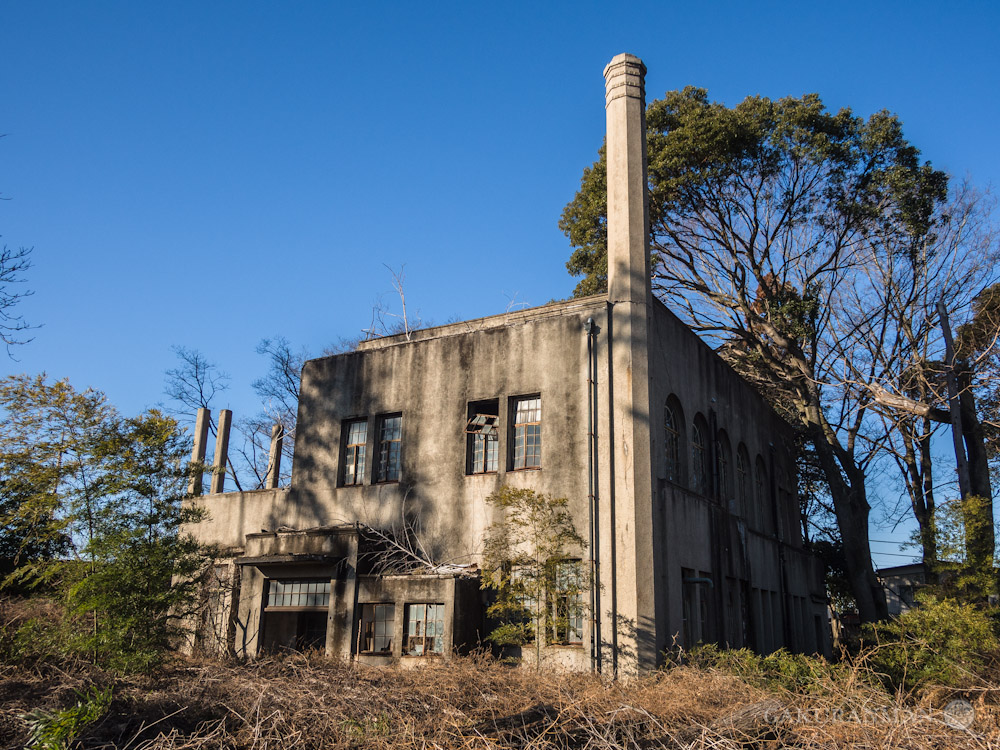
That tell-tale adventurer’s grin slid across my face as I beamed across at my friend from the driver’s seat of our rental car.
“That’s it man! The chimney. The concrete. The large windows. Thank god we found it so early! I was expecting we’d be driving around for hours looking for it.”
“I guess your map was right after all, huh? All that lost sleep for nothing. Still, we made it!” he replied.
“Sure did. Now, let’s park up somewhere inconspicuous and get inside before the locals wake up”.
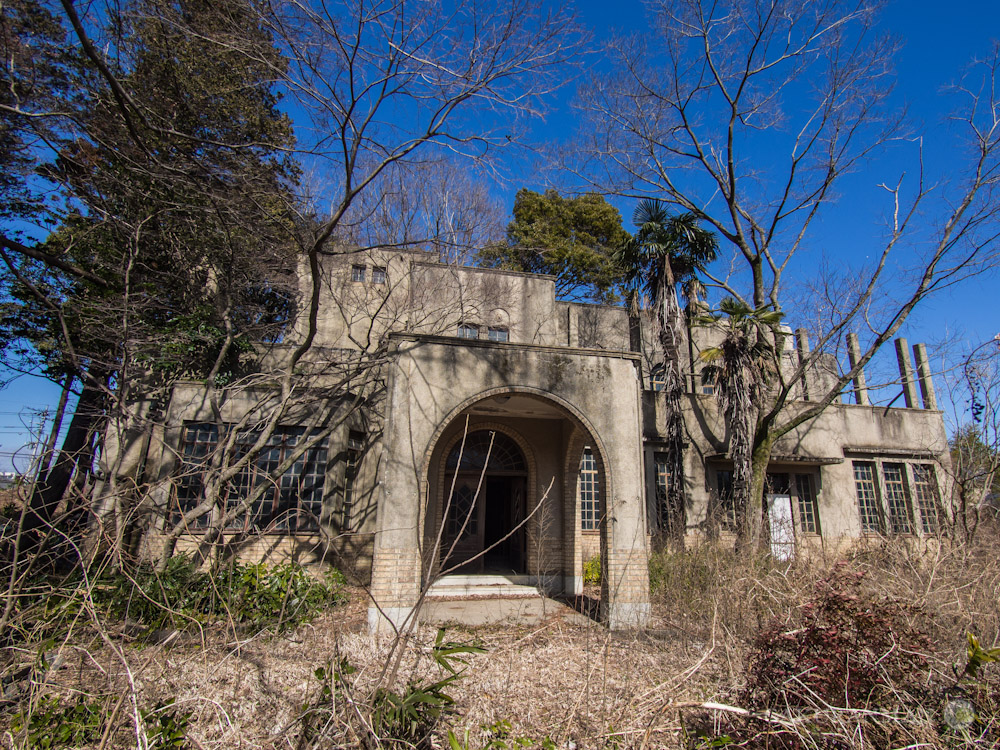
A Lesson in Persistence
Finding the location had been a rather stressful series of events. I first came across it on another haikyo blog some 3 months earlier and although some preliminary research helped lay out the groundwork for further investigation, I let it sleep on my computer over the winter holidays. I had a few clues – Mr. H was a politician, born 1861 and passing away in 1930. He rose to power in government through the Freedom and People’s Rights Movement, representing his local area in the government for the first time in 1894. The house itself though was not built until 1928 – just two years prior to our wealthy politician’s death. It was likely then that he never really lived there for any extended period of time, but the house was in the same neighbourhood in which he grew up, so I suspect it was a familiar and peaceful area for him to reside in his old age.
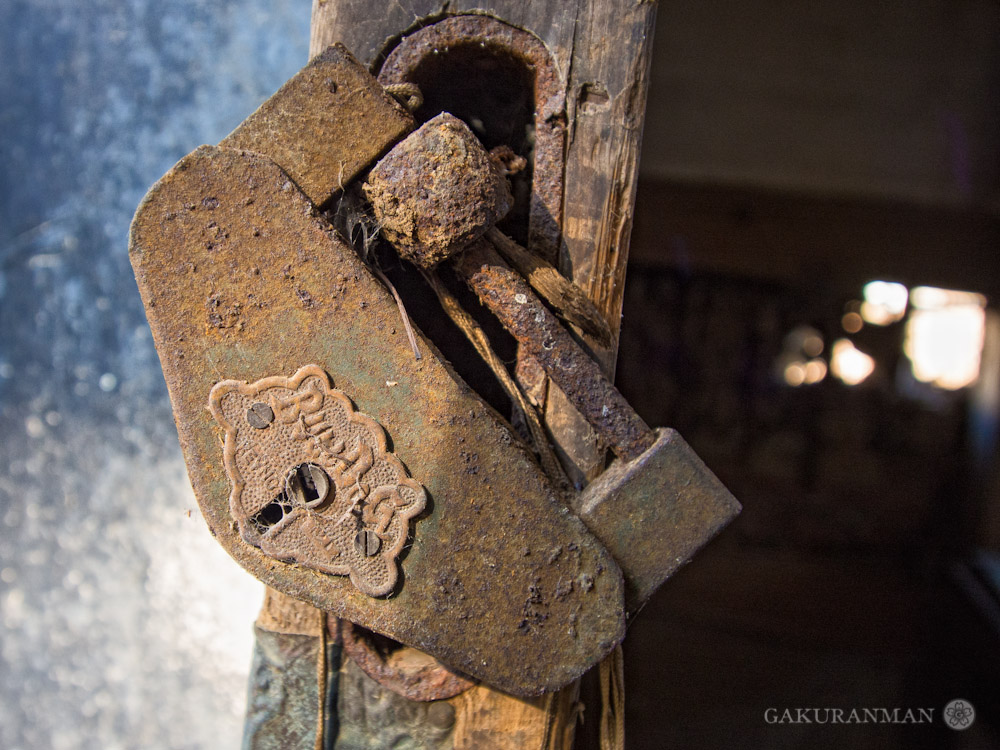
But despite these clues and much Google-foo, I just couldn’t happen upon a solid hit for the name. One would think that, given the specific details and information available, that finding such a prominent individual would take a matter of minutes. It did, eventually of course. After fellow haikyo enthusiast Lee from Tokyo Times wrote about the location, I knew I had to get out there myself as soon as possible before it succumbs to inevitable vandalism. After many frustrating hours trying different combinations of keywords, I reached out to a Japanese friend of mine who, being something of a history-buff, proceeded to lock-down our target’s name with a few taps of the keyboard. A single space made all the difference, but the search term he rendered brought up a very likely candidate.
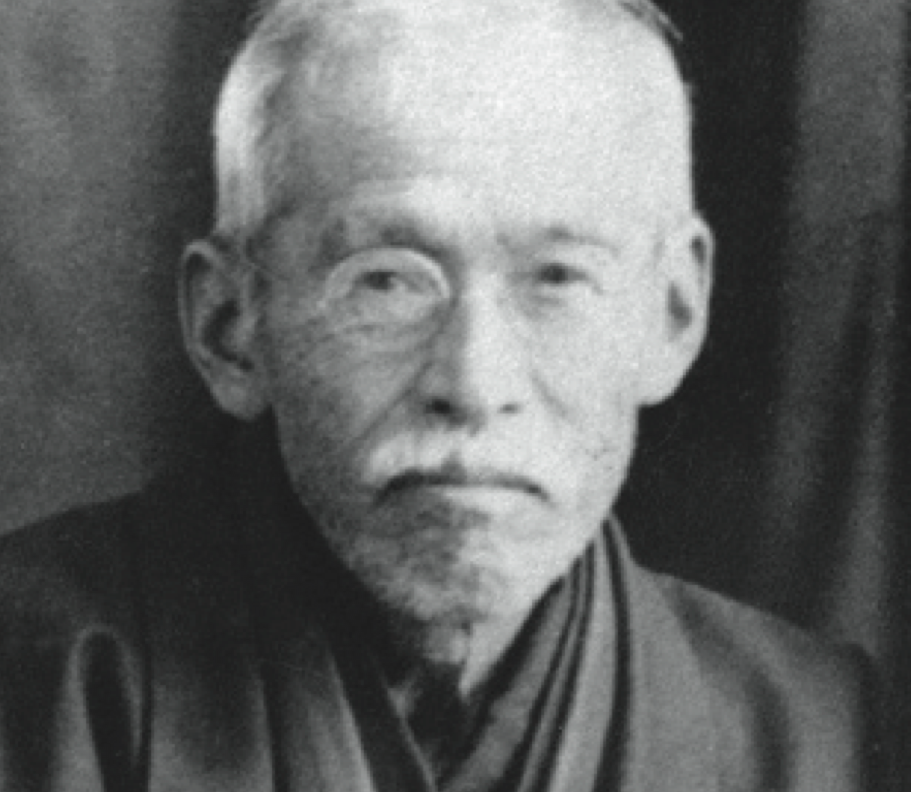
“That must be him! I can’t believe you found it so easily. I was searching with those exact keywords, but nothing..!”
“Ahh – it was just a matter of putting in the words precisely. Information about people this dated is few and far between on the internet, but if you know how to look…” he explained.
After I had a fix on the name, another search brought up a single hit, amazingly with an address in the precise city I knew the house to be in. It was my lucky day, or so I thought, until another friend advised me that the location was incorrect. It was 11pm the night before leaving and I had already booked the rental car. I couldn’t believe it! What now? Nothing to do but resume the search. It was a futile, fool’s attempt though. Once 2am rolled around, I begrudgingly gave up and went to catch a couple of hour’s sleep before departing.
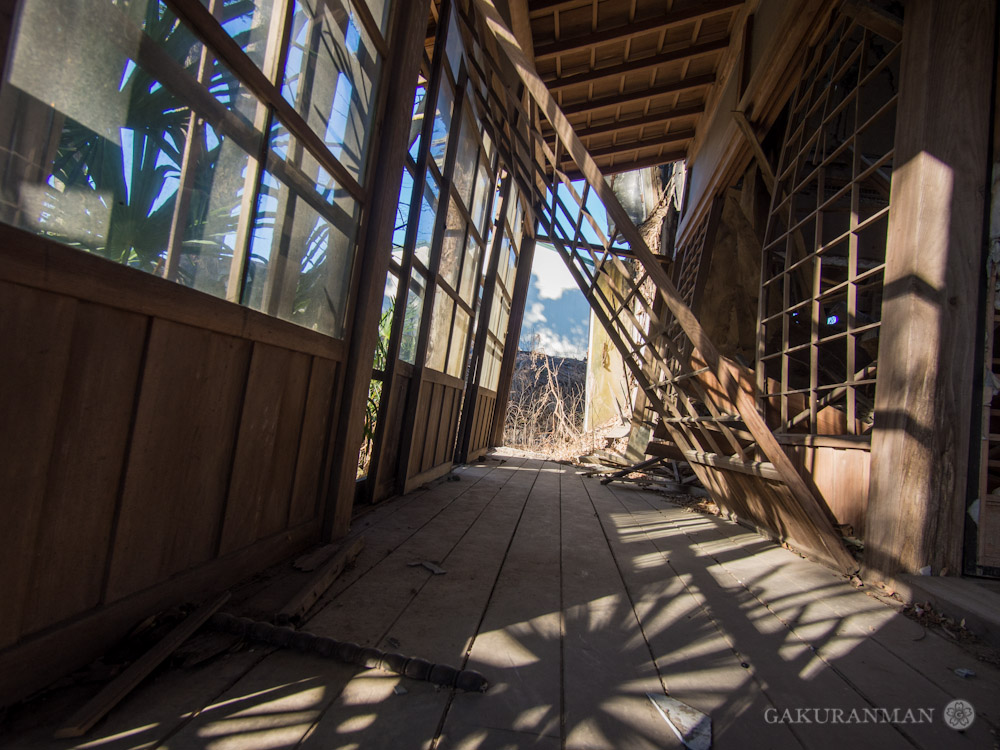
My company for the day was none too impressed when he heard that we may not even find the location I’d promised we’d visit, but we were here sitting in the car now and had a full day’s light waiting for us. Who knows – we may just be able to ask a local once we’re in the rough area, right?
After a long drive out of Tokyo, we set the navigation system to head to the only place I thought sensible – a large 5-metre tall stone rock erected in 1916 that was deeply related to by Mr. H, resting in a city park near to where he was born. The stone monument itself was in commemoration of a victory by the local people over the Japanese government in regards to ownership of an area of woodland. Originally the woodland had been jointly owned, but become national properly of the government following the Meiji Restoration. With the help of Mr. H., this small, country town then filed a lawsuit against the government and emerged with a historically significant victory – examples of which are few and far between.
Perhaps we may find a clue as to the whereabouts of his house here? I thought.
Indeed, the stone monument proved to be a sound bet, because not 2 minutes after driving past it and looking for a place to park, did I spot the crumbling remains of a concrete chimney poking out of a flourish of trees.
“There! There! Hell yes, we did it! And we almost no lost time at all!”
It was a minor miracle that day for us as it saved a good few hours of frustrating hunting around the city. Persistence paid off, and it made it all the more worthwhile once we stepped found inside the spacious grounds of Mr. H’s estate.
A Trip Into The Past
Mr H. was born into a wealthy farming family during the last years of the Edo period. From a young age he studied Chinese literature and in 1880 he entered a French language school opened by Nakae Choumin (1847-1901) known as the ‘Rousseau of the Orient’ for his research and translation work on the French philosopher Jean-Jacques Rousseau. After pursuing French studies and graduating, Mr. H penned several works while working as a professor at the school, including editing a French-Japanese dictionary.
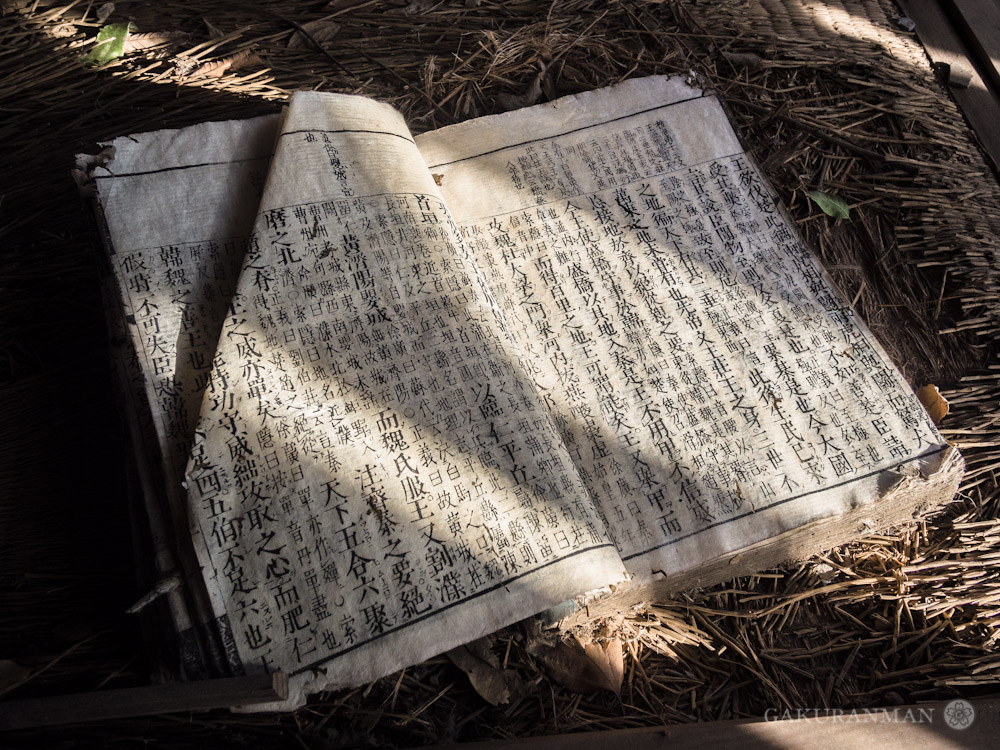
After a brief stint as a Professor of French, Mr. H returned to Tokyo to pursue translation and journalism. He wrote for the Oriental Free Press (later re-emerging as the ‘Free Press’), a liberal newspaper that challenged the corruption in the Meiji government, edited by the same Nakae Choumin that had opened the French school. Nakae continued to be an important political influence on Mr. H in developing the democratic ideals that would eventually lead him to join the Freedom and People’s Rights Movement and gain a seat in the House of Representatives in 1894 continuing until 1915. The Freedom and People’s Rights Movement was a democratic social movement credited with pushing the Meiji government to establish Japan’s first constitution in 1889.

So it was then that we took our first steps inside the goliath concrete building that had belonged to our wealthy politician. It was quite striking in contrast to the vivid blue skies enveloping the landscape around us. Inside the abode and away from the howling winter wind, we paused to look around.
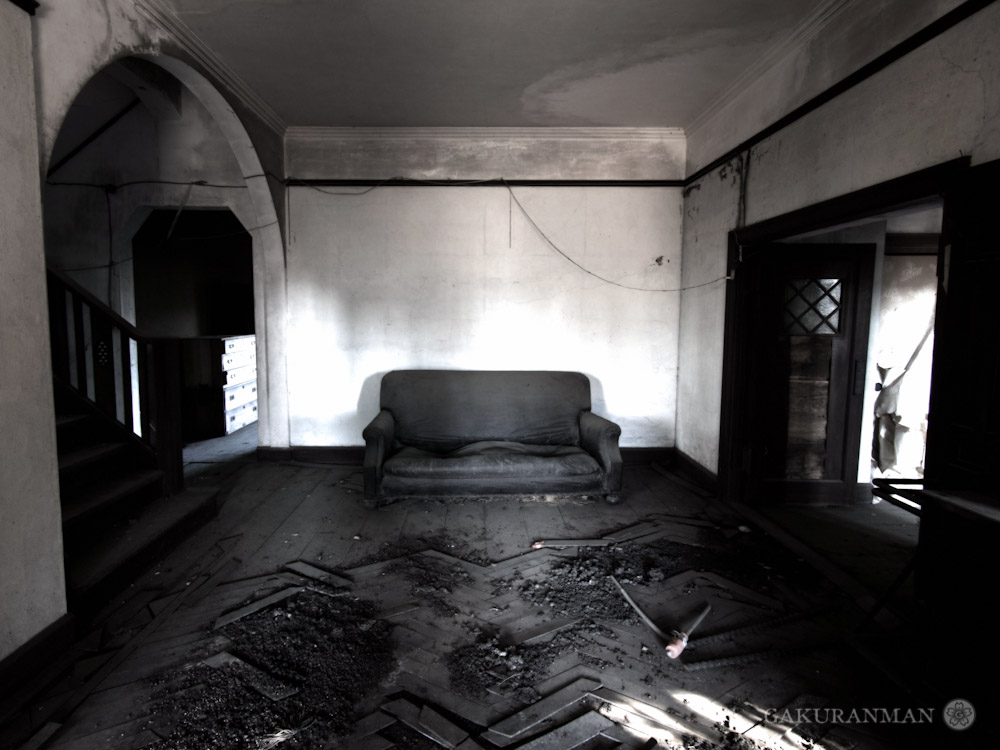
Everything seemed to be covered in a fine layer of dust and grime. A house certainly left undisturbed for many years. Large wooden boxes were stacked up neatly in almost every room, albeit completely empty – something of a rarity in Japanese haikyo. Quite often I’ve found buildings to either be completely stripped of all furniture, or completely packed with personal belongings, but seldom piles of boxes and grand old cupboards without so much as book or two.
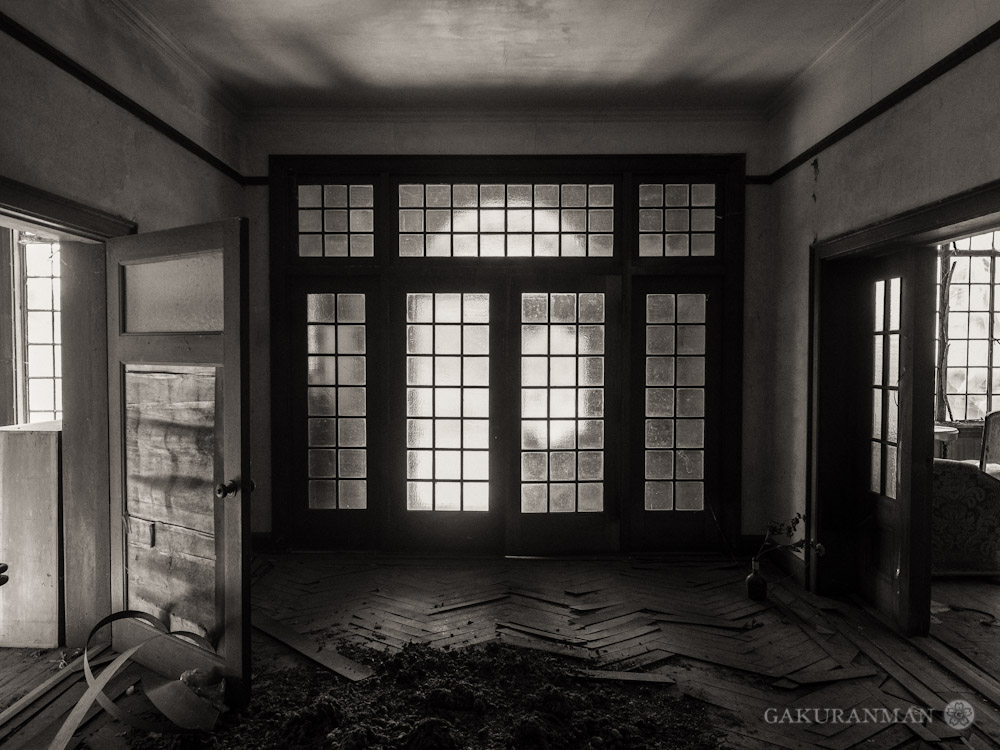
Such was the shock of the transition from colourful daylight to bare, grey-and-brown interiors that I felt it appropriate to process these pictures in black and white. Every now and then, as we’d wander around the spacious corridors, we’d see a set of grand windows that shone brilliantly. The window frames carefully designed and placed into the staircase were perhaps one of the best, stretching a few metres from top to bottom across three whole floors.
Heading upstairs, I became aware of my own insignificance and small stature in comparison to the roof towering above me. With the staircase winding upwards on one side, and the huge windows on the other, I couldn’t help but be reminded of my time on Gunkanjima staring up amongst the skyscrapers. The square patch of light was created by the bright sunlight screaming in through the rooftop balcony door. Allegedly at one point there was a swimming pool on the roof, but I find that a little hard to believe.
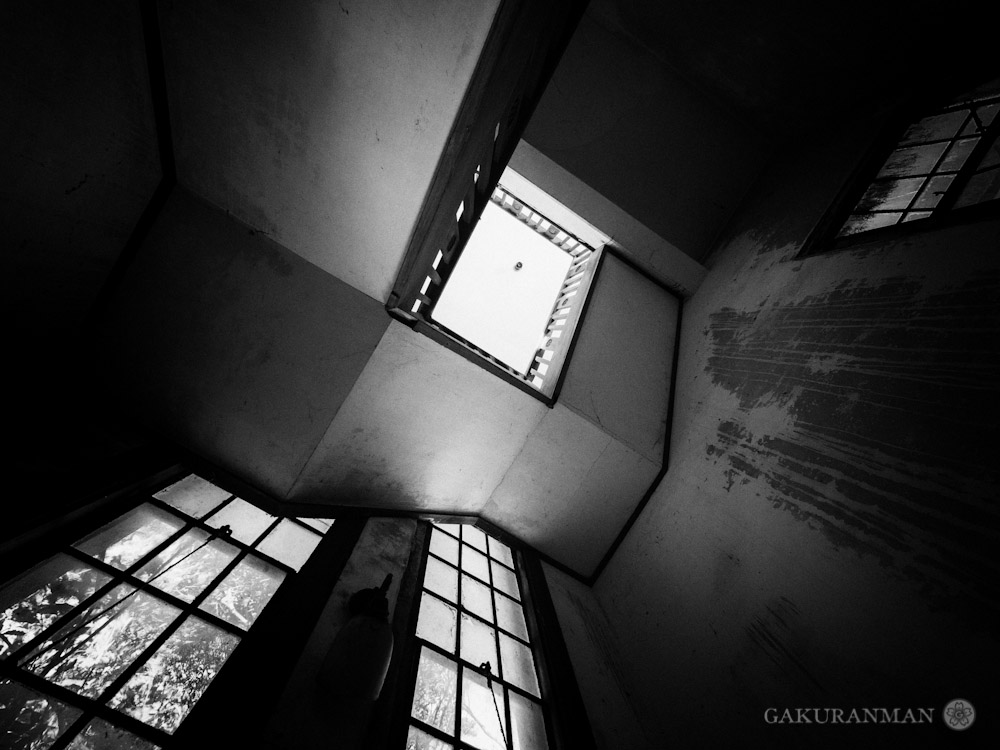
In an upstairs room, I found more carefully stacked boxes and a beautiful scroll with some calligraphy painted on. It was strange. Clearly the last owners or occupants of this house took the time to remove all valuables and personal possessions (except the pots and pans in the kitchen), but here was a scroll lying atop a wooden dresser. It looked as though it was originally mounted on the back wall, but had fallen down in age over the past years.

Other highlights wandering around the house included some curious graffiti written on a wall. It looked to be work done at the hands of a child, as there were also lines and scribbles on the wall ostensibly to measure height during growth spurts. I wonder who the lady is..?
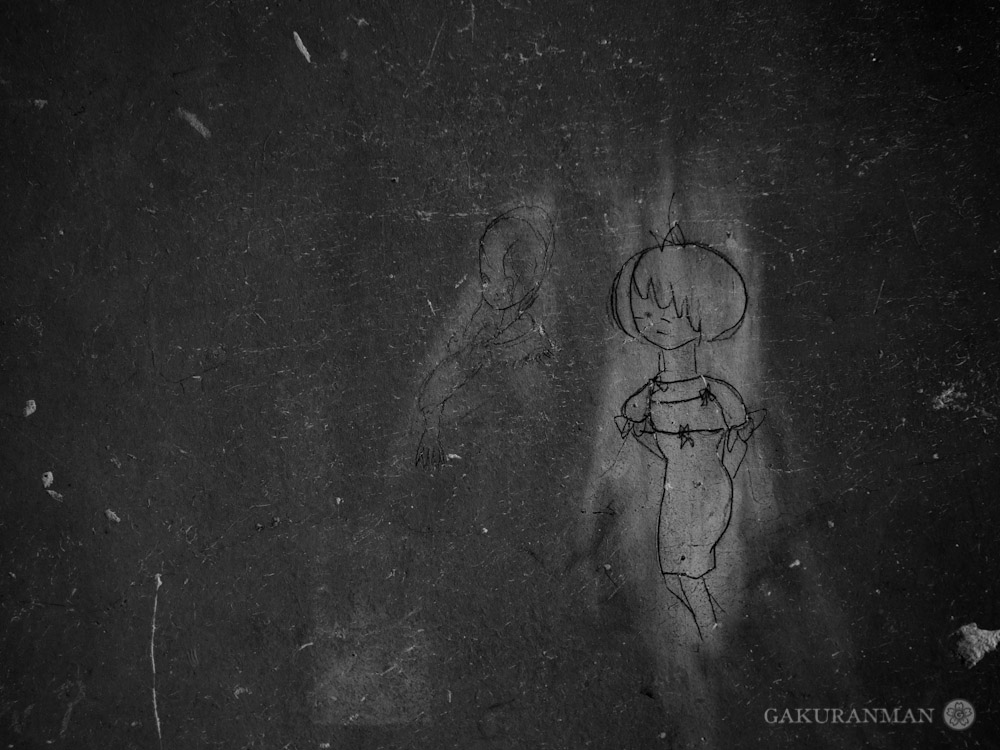
And of course, the grand portrait of a certain Mr. H. It was still sitting on top of the fireplace in the main sitting room. But wait – the name on this portrait does not exactly match our Mr. H… The surname is the same, so perhaps it is a relation? I stare at the mysterious figure for a few moments, inspecting the texture in the picture and grit left on the portrait through years of neglect.
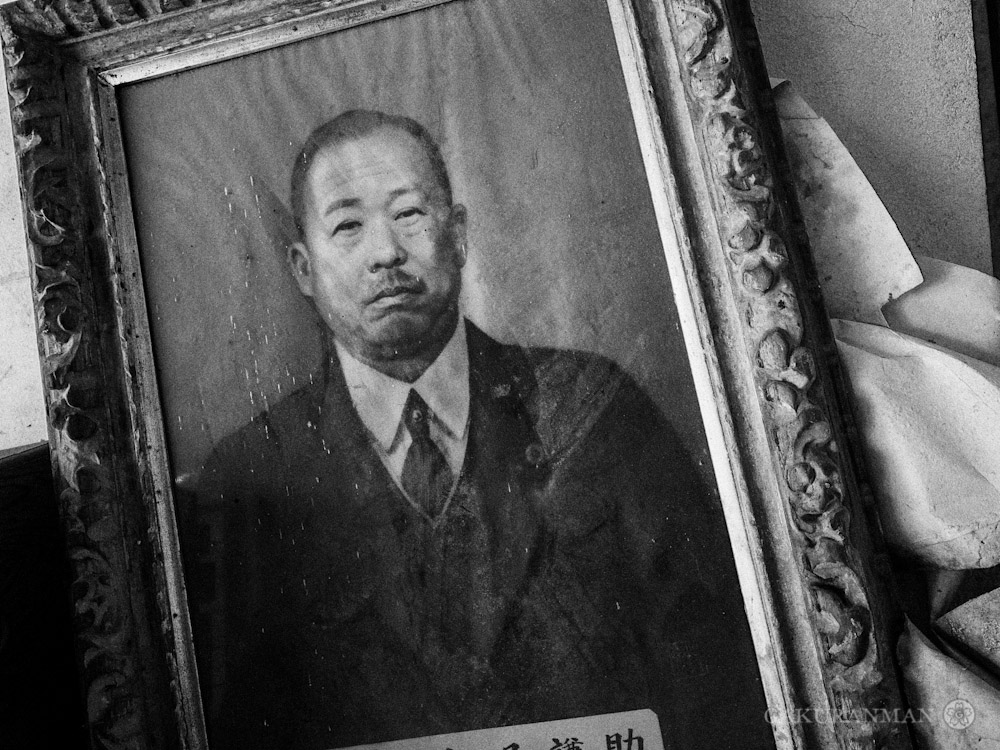
Suddenly though, I am pulled from the blacks and whites of the past back into the light. Although Mr. H’s portrait was old and discoloured, the room in which it lay was flooded in sunlight.
A Luxury Abode
I look around in amazement. The house really was built in a sublime location. The early morning sun bounced of the large windows in all directions, lighting up the darkest corners of the sitting room and giving new life to the ageing furniture. The lavish chairs carefully stationed in front of the fireplace glowed golden.
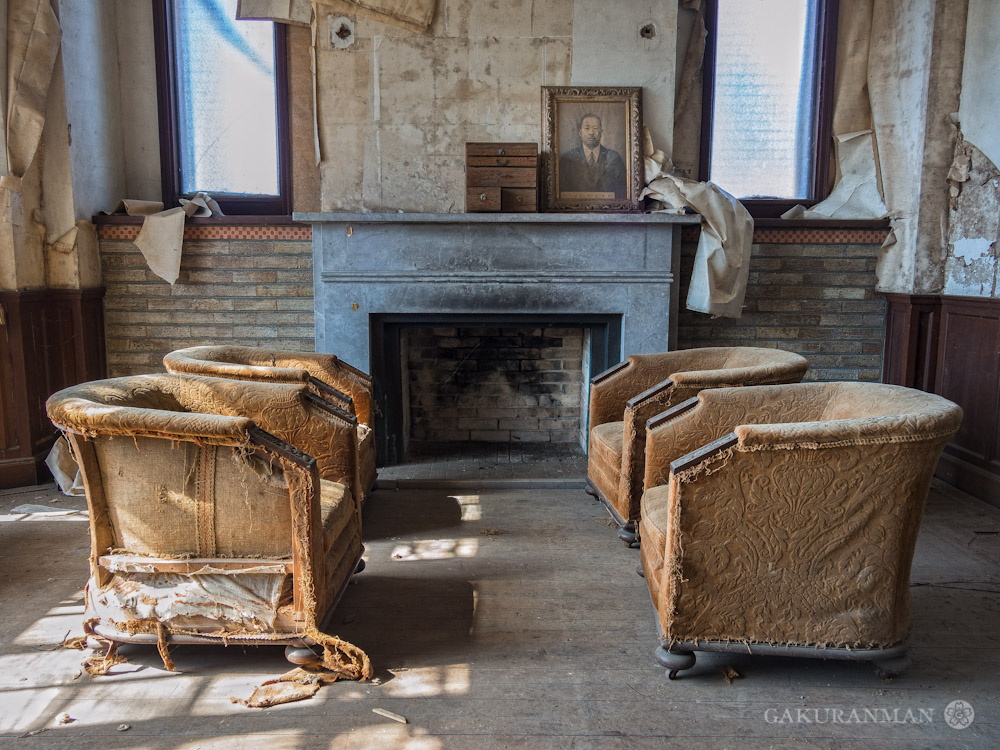
By the window, a solitary chair looking out onto the estate. Interestingly enough, the abandoned area also includes a defunct post office.
To the right of the central area was a large bookcase, which again looked lonely in its emptiness. Upon closer inspection however, it revealed a secret. Clasped together and laying on its side was a thin photo frame. As with doors, I couldn’t resist the urge to try and open it.
What lieth beyond its metal clasp..? I wonder, in anticipation.
With a small click, the photo frame opened to reveal its content. An old man and lady, presumably relatives of the family watched me back as I peered inside. Upon closer inspection, it looks as though the man is the same as the one in the portrait. The father and mother of Mr. H, then..?
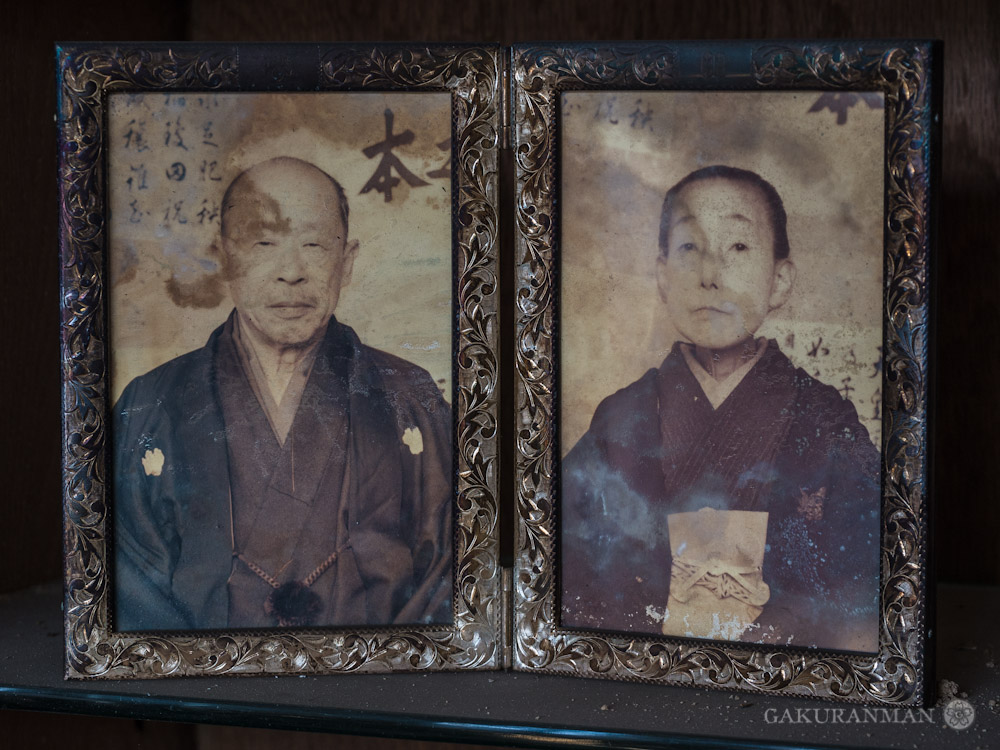
Little details are everywhere in this room. Reaching for my macro lens, I snap a close-up of the rustic handle on the chest of drawers next to the portrait.
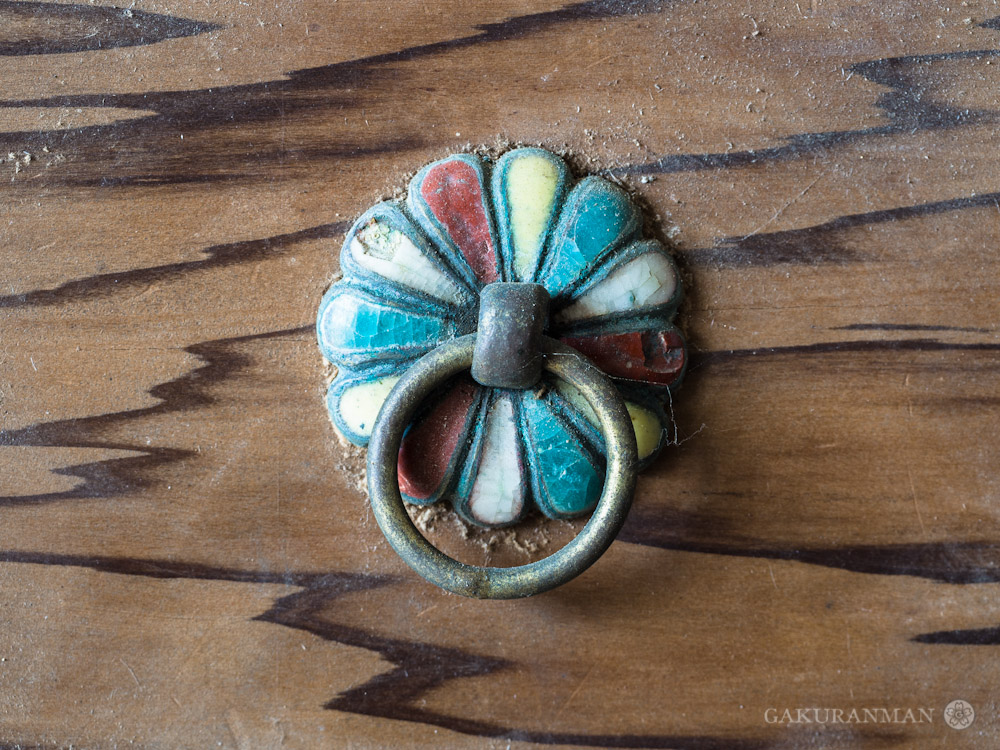
Not just that, either. Next to the bookcase is a small table. On top of it, a set of false teeth sit grinning back at me. Of all the things to leave behind in an empty house!

Another curious item I find tucked away, which looks strangely reminiscent of a banknote. The vintage Japanese military illustrations draw my eye, and I can’t help but wonder what it is. It turns out that it’s a wartime savings bond from June 1942 for the value of 30 yen, issued by the government in an appeal to patriotism to help finance military operations. Citizens would purchase the bonds and essentially loan the wartime government their own money. In exchange the bond would accumulate interest which, theoretically, the citizen would be able to claim after the war effort was over. According to this site, as a collector’s item this bond would be worth about 1,000 yen ($10) today if in good condition, although the value of the bond itself would have been much more. To give some idea of the value, a starting salary for a teacher in 1930 would have been about 50 yen per month. My initial confusion over what this bond was initially came down to the fact that the horizontal characters are written right to left, as opposed to left to right like modern Japanese. Cheers to the people commenting for clarification!

The house seems much more colourful now that I’ve seen a few human faces again. I’m noticing little trinkets all over the place. Of course, the bright sunlight streaming through the windows really livens the place up too, although it’s still frighteningly cold! Upstairs on the second floor is a grand ballroom of a sort, complete with 5 large windows stretched across one wall, facing another wall with equally an equally large glass facade. The sunlight pouring into this room in unreal.
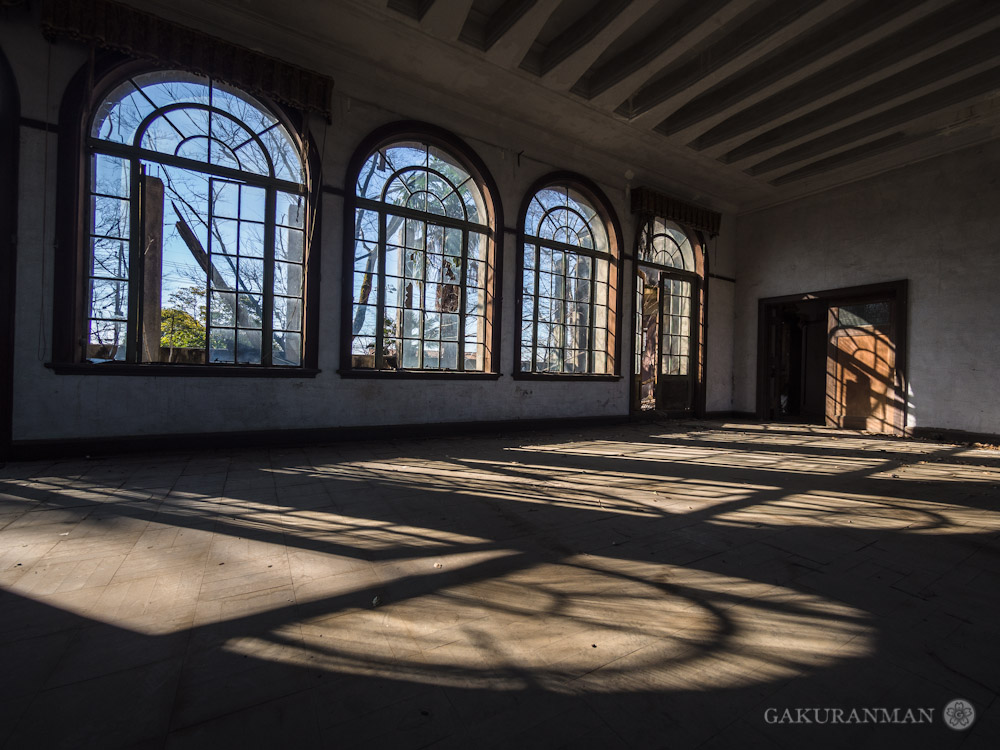
Rather than shadows stretching across the floor we had sunbeams, all against a backdrop of clear blue skies. Although you wouldn’t guess it from the pictures, the wind was howling with a force the entire time we were exploring the building, rattling the windows in frames and bending even the sturdiest of trees.
But, as magnificent as the House of Mr. H is, time as always keeps us pushing on. We come back downstairs and make our last few shots of some of the smaller more interesting items before nipping around the first floor rooms one last time to make sure we didn’t miss anything. It was already past noon and we’d been there nearly four hours already! Other locations awaited, and with the short winter days we were eager to make sure we had enough daylight left to properly see them.
So it was that we bid the grand dwelling farewell. It’s difficult to tell exactly how dear the place was to Mr H., as he spent the better part of his later years living in Kamakura since 1906. Indeed, his grave is in the Tsurumi district of the same prefecture. But what we do know is that, compared to most other haikyo, this place had a definite uniqueness to it. From the massive concrete structure and chimney, the old Japanese-style storage house (kura), accompanying hut and spacious gardens.
Yes, this haikyo had that special quality along with a definite, traceable back-story and rich history that few abandoned locations possess. The Royal House would be one such other location, but such treasures are few and far between.
A definite treat in all aspects of the explore.
(Special thanks to Peter Durfee for laboriously picking through the article and notifying me of many slight factual errors which have (hopefully) now all been corrected. He claims to just do this sort of research for a living, which explains why he’s so good at it, but I like to think he’s a closet haikyo enthusiast really :p. A lesson well learnt in not trying to write articles at 3am!)










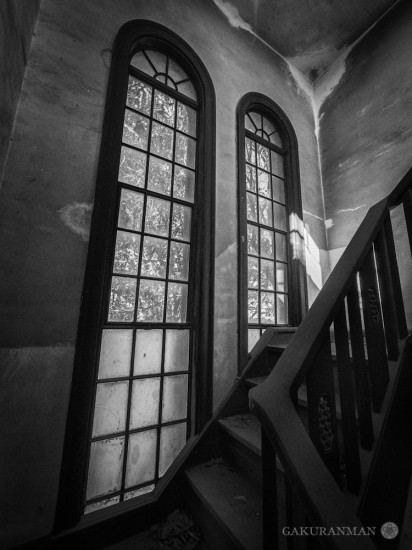
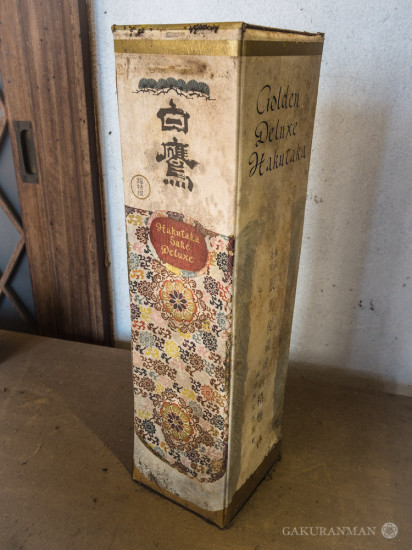
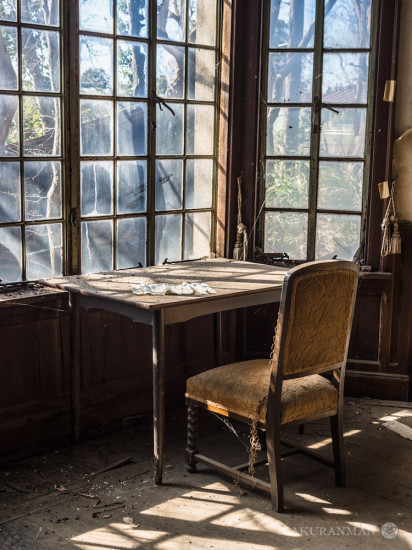
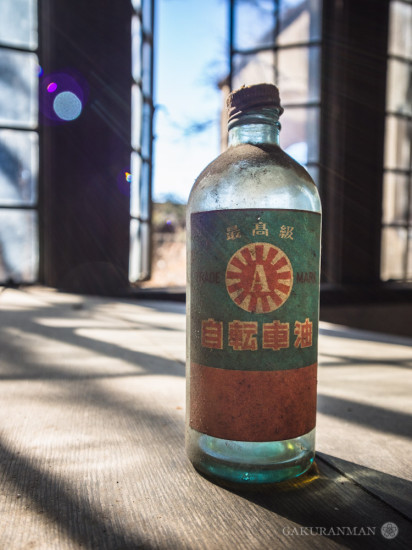
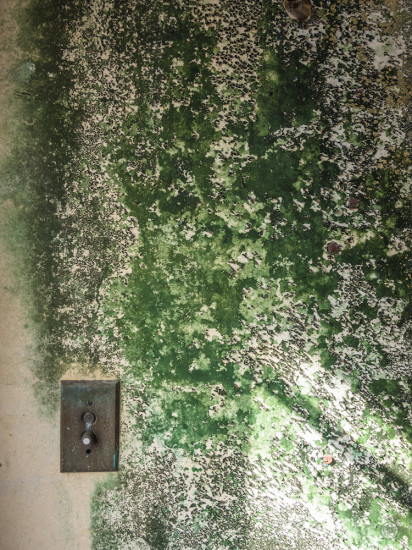
I read on Jordy Meow’s site that this structure
was demolished. What an act of senseless barbarism to
destroy such a beautiful and unique Meiji era building.
So sad.
Apparently so yes :(. A real shame.
I am not sure of what I love most about this article. Is it the way you gracefully painted the experience by gliding from black and white into color, the warmth you depict of finding a human face amongst the grey…. or maybe it was the teeth. :) Maybe it was the combo of all and how the viewer can appreciate your respect and passion you present for exploring.
Thank you for the kind words. It never gets tiring to hear from excited readers :). I myself began exactly where you are – reading the reports of others and becoming inspired to get out and have my own adventures!
Amazing photos. Thank you for sharing. I’ll be traveling to India at the end of the year. I can’t wait for the experience for writing and photographing!
Keep up the great work!
India sounds like a fantastic experience. Be sure to document it well, even if that means taking a few daily notes of things that happened, what you felt and thought. Often I don’t get around to writing up my stories for some time after the event, and gradually the interesting details begin to fade…
Hi, Michael, In Delhi, there are many Haikyo, where somebody lives.Homeless guys are living there.Are you going to update about me soon??
Excellent article and photos as always Michael.
If I may, I suggest one place that is worth visiting id Taya Doukutsu near Ofuna in Kanagawa. It is not really a haikyo, but is still amazing. It is a series of tunnels dug into a hill over 600 years by Buddhist monks. Almost Indiana Jones-esque.
Anyway, I look forward to your next story.
BTW if you are interested, Siologen and Dskant from the Cave Clan, have good websites worth looking at (Siologen is another Brit like you and likes to boast he was the first one to coin the expression urbex). Look up sleepycity.net and siologen.net
Your photographs of this place are truely amazing!
Wow, what a unique place! Despite all of the concrete and bare floors, this place feels really airy and sunny–not at all what one might expect from the exterior. I can only imagine what it was like when it was still in use. Thank you for sharing!
Yea, inside the sunshine really brightened up some of those rooms! The main sitting room and the 2nd floor ballroom especially!
“The lavish chairs carefully stationed in front of the fireplace glowed golden.” This is copyright Jordy Meow ;) I really wanted to make this place to look a bit better (hopefully people will not hate me for this). Very good photos by the way!
Cheers! But wait – you posted about this place already?
No, I didn’t post anything about it yet (only that: http://imgur.com/a8ewzZa :p). I actually want to visit it again, I am sure it will look like a real jungle in spring!
I don’t doubt it. That place was crazily overgrown, and we only managed to get in because it was mostly dead grass blocking our way! Nice picture by the way. We took something similar :p.
Snji Tyochiku saiken is interesting. The Bank is Nihon kangyo Bank. It is combined to MIZUHO bank now.
Interesting! Thanks for the info :).
This image (http://gakuran.com/eng/wp-content/uploads/2013/02/honourable-house-of-H-haikyo-21.jpg) might possibly be a war time bond. Just guestimating from the kanji/chinese characters.
Hi Greg. Thanks for the comment. It does seem like it has some financial aspect, doesn’t it? I noticed the Kanji for savings, so I thought perhaps it might also be related to some kind of rationing program, but a war-time bond makes more sense!
*Edit* After a quick Google search turning up the same image, it would appear that you are right. It is a war bond. Good work!
Gorgeous! Thanks for the brief, enjoyable trip away from my cubicle. I’m curious about the banknote-you said the characters are so old that you can’t read it? Does this written language evolve that quickly? (Learning Japanese is on my list – I know nothing about it, presently).
Hi Arah. The characters are definitely different to the modern Japanese I see every day, but it isn’t illegible. I probably just lack the prerequisite experience with these combinations of characters to be able to properly decipher it, although admittedly I didn’t spend a lot of time trying to work out the characters while writing this post.
*Edit* I realised that the horizontal text is written right to left, instead of left to right like modern Japanese. Now everything makes much more sense!
戦時貯蓄債券 (せんじちょちくさいけん) – Wartime Savings Bond.
Another wonderful journal entry of your adventures. Thank you.
Thanks Charlie! I’m glad new opportunities for adventure keep presenting themselves :).